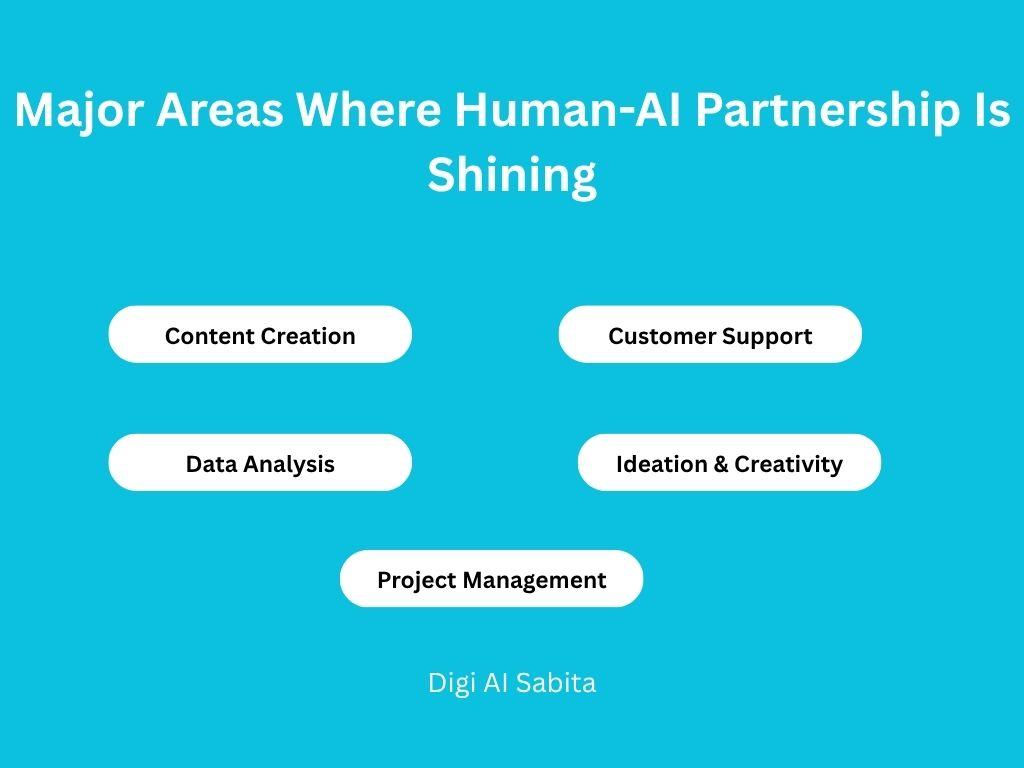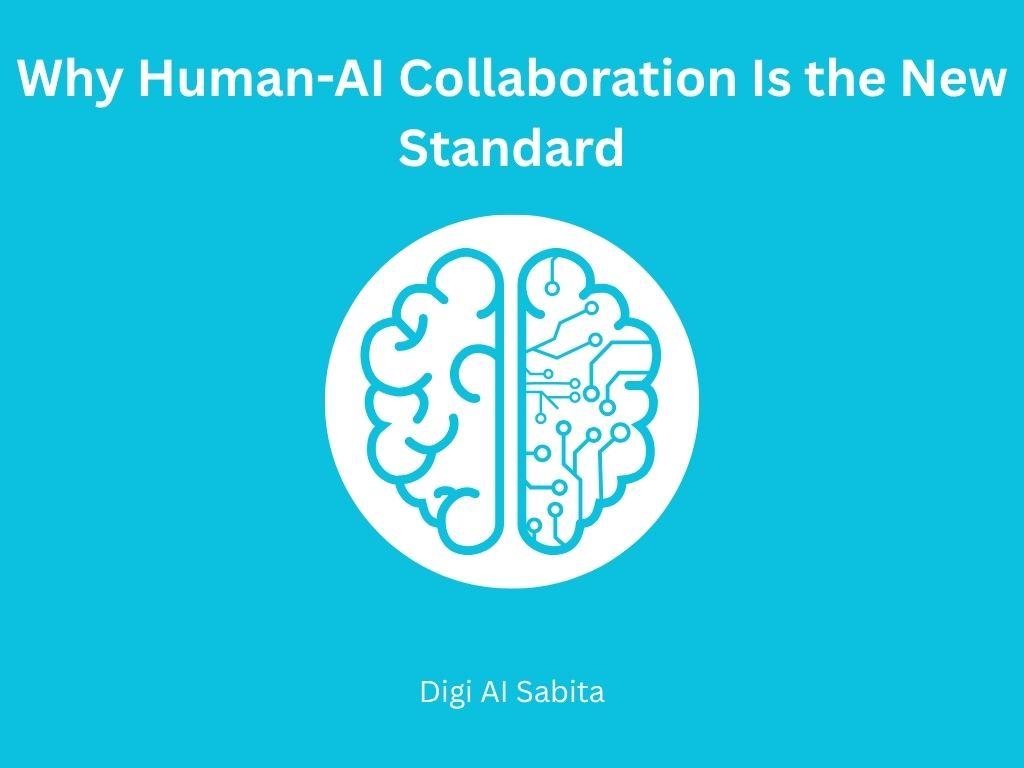Introduction: Human-AI Collaboration
Due to the rise of artificial intelligence, the working methods of offices should be modified according to today’s needs. Work done is faster by AI, but human-AI collaboration is important to finalize the output. It is not possible on only one side. There should be a combination of people and artificial intelligence (AI) as well. From practical assistants and scheduling bots to data analysts with might and creative co-pilots, AI is more than a device. It’s a partner. This blog focuses on human-AI collaboration. You’ll get a full explanation about Human-AI collaboration, which is the new norm in office spaces, and it’s transforming everything from daily workflows to strategic planning.
- Human-AI Collaboration Definition
- Why It's Becoming the Standard in Modern Offices
- Major Areas Where Human-AI Partnership Is Shining
- Human Skills Still Dominate
- Challenges of Human-AI Collaboration in the Office
- Top Practices for Seamlessly Integrating AI in Office Culture
- The Future: AI Will Be on Every Team
- Conclusion:
- Call to Action
- (FAQs)
- You may like:
Human-AI Collaboration Definition
Human-AI collab partnership between, i.e., a human and an AI-designed system in order to make arrangements where both partners divide tasks, make decisions, and take responsibilities to improve productivity, creativity, and precision. In order to complete automation, this arrangement keeps humans in charge and supports AI to speed up or gain maximum output.
This union crosses industries and departments.
- HR supporting AI to filter job candidates
- Marketing supporting AI to create ad copy
- Sales leveraging AI to score leads
- IT leveraging AI to identify cyber threats
- Executives leveraging AI dashboards to make real-time decisions
Instead of replacing jobs, AI is increasingly complementing human skills, building smarter, faster, and more active teams.
Why It’s Becoming the Standard in Modern Offices
1. The Booming of Smart Tools
AI-designed tools like ChatGPT, Notion AI, Grammarly, Microsoft Copilot, and Jasper AI are being infused into daily office software. Seamless access makes it natural and required for workers to work alongside AI.
2. Need for Greater Efficiency
Today’s businesses feel forced to accelerate and do more with less. AI assists teams to do so by automating repetitive tasks, suggesting guidance for the next step, and preventing communication breakdowns and delays in work.
3. The Transition to Hybrid & Remote Work
Different department teams use AI to plan, track productivity, summarize meetings, and collaborate asynchronously. AI keeps work going even when time zones or work schedules don’t.
4. Increasing Employee Burnout
AI can alleviate burnout by automating mentally taxing or repetitive work, freeing employees for more important work requiring judgment and creativity.
5. Data-Driven Culture
Today’s offices produce mountains of information. AI enables real-time analysis of that information so that teams can make quicker, better decisions.
Major Areas Where Human-AI Partnership Is Shining

Content Creation
Content writers, marketers, and communication teams leverage AI for ideation, writing, editing, and SEO optimization. Human imagination coupled with machine efficiency produces better results, quicker.
Data Analysis
AI applications readily identify trends, outliers, and patterns in intricate data. Human analysts utilize that data to make data-driven business choices.
Customer Support
Routine questions are answered by chatbots, and human reps deal with higher-order interactions. This mutual support increases customer satisfaction and team energy.
Ideation & Creativity
AI can initiate ideas by proposing angles, visual approaches, or hypotheses that may be missed by people, ideal for product development and creative tasks.
Project Management
AI assists with prioritization, deadline prediction, resource assignment, and even detecting roadblocks before they become issues.
Also read: The Ultimate Guide to Mastering Content Creation
Human Skills Still Dominate
Though AI can aid and augment effort, there are domains where humans continue to excel:
- Empathy & Leadership: People management, conflict resolution, and inspiring teams
- Ethics & Judgment: Decision-making in uncertain or high-risk scenarios
- Creative Vision: Conceptual thinking, creativity, and narrative
- Cultural Context: Regional, linguistic, and emotional sensitivities
The most productive modern workplaces aren’t technology-centric; they are human-centric and AI-enabled.
Challenges of Human-AI Collaboration in the Office
While there are advantages, mixing human and machine workforces doesn’t come without tension:
1. Training & Adoption Gaps
Not everyone in your organization is as tech-savvy. There needs to be training in place so that teams feel comfortable utilizing AI tools responsibly and with confidence.
2. Trust Issues
If staff do not see how AI is working, they might not accept its outcomes—particularly in sensitive sectors such as recruitment or finance.
3. Fears of Job Loss
Individuals can fear that if they work alongside AI, they will eventually be replaced. Honesty is vital.
4. Bias & Data Privacy
AI algorithms carry through the inclinations found in their training data. Employers need to ensure proper use of AI, particularly within HR, legal, and healthcare sectors.
Also read: The Future Is Now: Explore the Power of AI Solutions
Top Practices for Seamlessly Integrating AI in Office Culture
To ensure human-AI collaboration is a success, office managers should:
1. Foster a Culture of Ongoing Learning
Provide regular training sessions, workshops, and hands-on labs to establish AI literacy across departments.
2. Make AI Clear & Explainable
Employ tools that offer traceable output or “reasoning paths,” thereby allowing humans to check results.
3. Balance Control & Autonomy
Have AI perform support tasks, but reserve human judgment as the driver’s seat for critical decisions.
4. Set AI Ethics Guidelines
Include data use, fairness, transparency, and accountability policies.
5. Track Impact with Metrics
Monitor time saved, accuracy increased, or customer satisfaction enhanced to prove real ROI.
The Future: AI Will Be on Every Team
The future office tools will be AI-native, not AI-enabled. This implies:
- AI teammates that show up to meetings, take minutes, and recommend follow-up actions.
- AI helps as co-worker which is helpful for adjusting your work habits and respond to your weakness.
- Department-spanning AI systems that harmonize workflows, teams, and objectives
- Offices where collaboration occurs between people, machines, and software, all at once
This isn’t science fiction, it’s the blueprint already being pursued by leaders like Google, Microsoft, Salesforce, and thousands of quickly moving startups.
Conclusion:
The office of today is changing fast, and AI lies at the center of all that change. Human-AI collaboration is not a passing fad, it’s a lasting enhancement.
The organizations that will flourish in the future won’t be those with the best AI, but those who have figured out how to blend it with the distinct capabilities of humans: empathy, vision, ethics, and imagination.
If AI is your future coworker, now is the time to learn to collaborate.
Call to Action
Ready to revolutionize your workspace? Begin incorporating AI tools into your workflow and discover the next level of productivity.
See our handpicked list of AI tools for the office.
(FAQs)
Q1: Is AI replacing office jobs?
AI is not replacing jobs but rather specific tasks. Most jobs are being recast rather than phased out.
Q2: What AI tools are best for office work?
Some of the most popular tools are Microsoft Copilot, ChatGPT, Grammarly, Notion AI, Jasper, Zoom AI Companion, and Otter.ai.
Q3: Can non-technical employees benefit from AI?
Certainly. Most tools are no-code or low-code and marketer- and HR rep-friendly, for sales staff and administrators too.
Q4: I want to start using AI in the office. Where do I begin?
Begin small, choose one AI tool that enhances your workday. Build confidence, then roll out across teams.
Q5: What are the dangers of AI in the workplace?
Dangers involve data bias, over-reliance, privacy issues, and employee pushback. These can be mitigated with training and policy.
